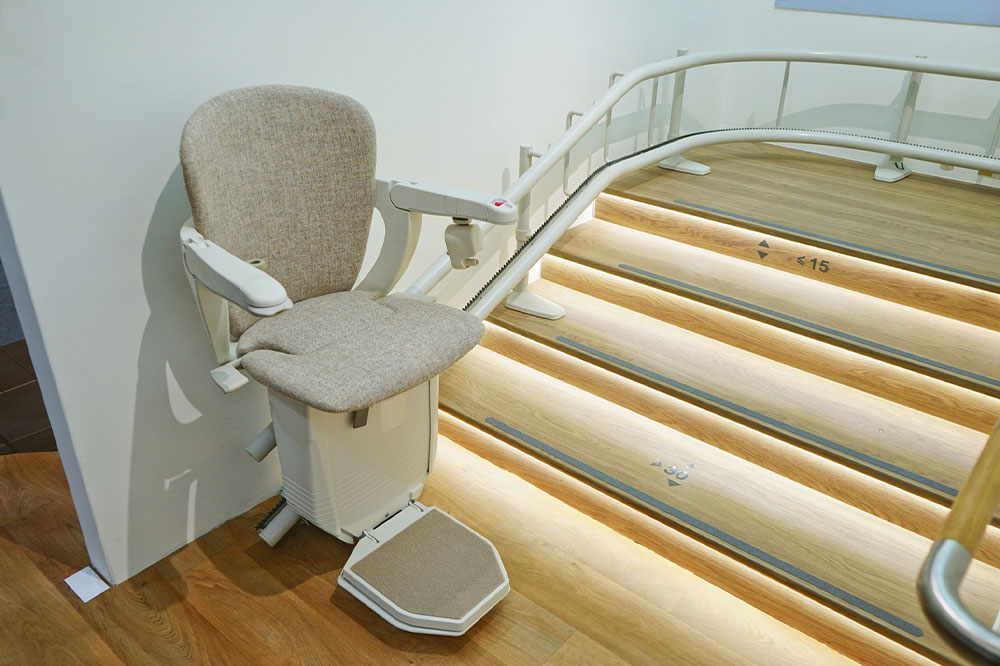
Stairlifts – types, pros and cons
People with mobility issues can have a hard time navigating through physical hurdles, and they deserve some comfort in their own homes. The presence of stairs can be a problem for them. Stairs can cost them their dependence or force them to alter their lifestyle. However, it can all be prevented with the installation of stairlifts. This article will guide you through various types of stairlifts and the pros and cons of getting one installed.
Types of stairlifts
Straight stairlift
One of the common examples of an indoor stairlift is the straight rail stairlift. These are designed to take individuals straight up a flight of stairs without any twists or turns. They provide seniors and people with health concerns an easier and faster alternative to tackle stairs. You can also find economically efficient options. Among the various options available, straight rail stairlifts are the least expensive and the easiest to install. They require very little time and effort for installation and are just as easy to maintain. However, before installation, ensure the size of the selected stairlift and the stairs for a better fit.
Curved stairlift
The curved rail stairlifts are different from the straight rail stairlift in more than one way. The former has to be customized according to specific needs, while the latter is bulk produced. The tracks for curved stairlifts are made specifically to meet the stairs they are to fit into. The railing needs to meet the curvatures of the stairwells, midway landings, and other specifications. This means that the customized stairlifts can take a few days to weeks to be ready for installation. Additionally, it is necessary to have them installed by a professional. Involving professionals in the process will also guarantee that the right type of railing is chosen.
Outdoor stairlift
As the name suggests, this particular installation takes place outside houses, offices, and other architectural structures to provide an easier way for people to get to the upper levels. They are built to survive extreme weather and withstand damage caused by rain and snow. They are most commonly used for navigation with porches, patios, decks, and other elevated outdoor structures. Some stairlifts can be used as either indoor or outdoor stairlifts with just a few modifications.
Seated/Standing Stairlift
When it comes to mobility devices, seated technology is one of the most common choices. Seated stairlifts come with a footrest, backrest, and seat. The user needs to press a button to navigate the stairs after being seated in the stairlift. However, if the navigation system is being sought out for people with mobility issues and problems with their knees, standing stairlifts are an effective alternative. It has a platform in place of a seat and handles to hold on to when using the stairlift. Additionally, they also take up comparatively less space than seated stairlifts. However, if you want to compare the two price ranges, there might not be much difference.
Stairlifts are a significant upgrade that needs to be made with extensive thought and consideration. It is, therefore, crucial to take some time and weigh the pros and cons of this particular upgrade. Here are some common advantages and disadvantages of getting stairlifts.
Pros
Safety
Stairlifts have a record of being great upgrades to prevent accidents and falls that involve stairs. The device comes with multiple safety features that provide security to seniors and other people with mobility issues. Some stairlifts have obstruction sensors, swivel seats, and safety belts for maximum security while navigating stairs. Not to mention, it also provides mental peace with such features.
Easy installation
Installation of stairlifts can take up time and effort, proving to be an involved process. However, it is a simple process and can be mounted with little to no hassle. Assembling the device involves having all the required components in hand for easy installation.
Mobility
A stairlift installation ensures that users have full control over their lives and are not limited by their mobility issues. It can save them from having to switch to assisted living and lets them have full use of their homes.
Cons
Expensive
While stairlifts prove to be less expensive in comparison to home elevators, they can be costly nonetheless. The purchase and installation will shell off at least a couple of thousand dollars. Also, the maintenance cost will be high. It is important to check the warranty period of the stairlift.
Resell value
Stairlifts are a difficult item to resell. For one, they lose a lot of value after the initial sale. Additionally, the problem with customized stairlifts is that they need to fit the second buyer’s requirements, which may be improbable in most cases. Stairlifts might also result in the devolution of property if someone decides to sell the house.




